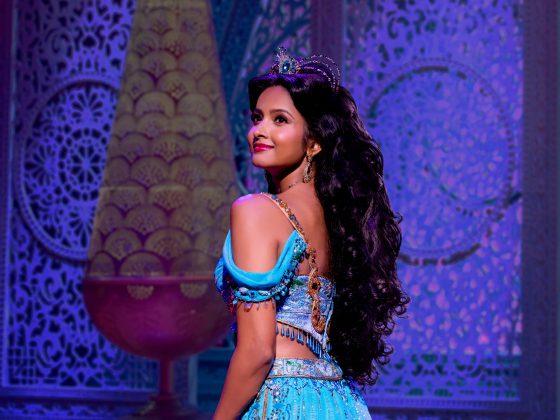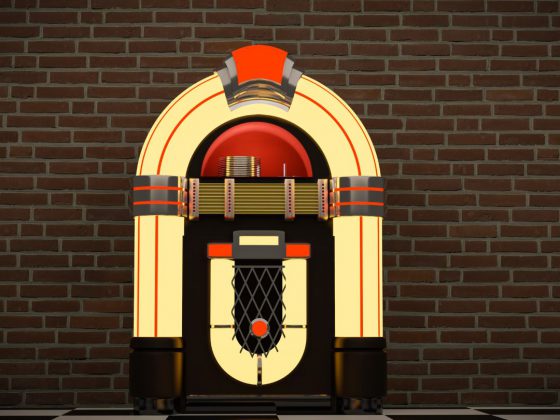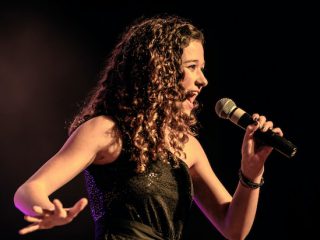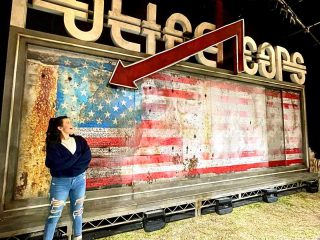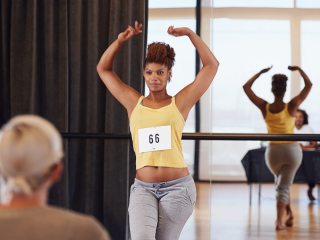Today, I’m chatting with Phoebe Chambers, a costume supervisor in the UK. Having been in the industry for many years, Phoebe has had an impressive career thus far, from working on West End’s Cinderella to Glinda’s fabulous sequined dresses in the Wicked movie, and on many regional productions throughout the UK.
Q: How did you get your start in costuming?
PC: It all began with my mom doing amdram! We have a really good amateur dramatics group in my village where I grew up, so I was part of that, acting on stage. And one day I realized, I didn’t really care about the acting but I liked dressing up so I wondered if you could do something with that aspect of it. So, I went to the costume lady, who used to be a professional dressmaker, and said I was interested in learning a bit more, so I helped her with the costumes for the next show. It was such a learning curve and a really good time. That also coincided with work experience week at school, so I managed to pick up some experience at the local costume wardrobe, which is where the amdram troops will go to hire costumes for their shows and again, I loved it. From that, I decided I would do it as a job if I could.
I went to Rose Bruford College to get a costume production degree and it was a really great course, because they have all the backstage programs (lighting, design, stage management) learning together on the same level. And then, after I graduated from there, I decided to stick to the regional circuit instead of going to the West End because I’ve always enjoyed the country and you get to see more of the UK because you are travelling around. So, I went to my local theatre in Cambridge and asked if they had any work coming up and they did, and it all snowballed from there.
Q: What different roles can you find within a show’s costuming team?
PC: On most shows, you have two different teams. The costume team handles everything prior to opening a show, while the wardrobe team relates to everything that maintains the look of it during a run. The costume supervisor doesn’t normally stay for the full run of a show; they’ll pass over to the wardrobe mistress or master who will then take over. They will, in turn, organize the dressers and make sure costumes are in the right places, laundry is being done etc.
If you’re the costume supervisor, it comes down to organising fittings, who’s wearing what, the sizes needed, buying tights, buying shoes; basically, making sure you have all the elements of the costume you are going to need. It’s also a lot of liaising with the designer and the nitty gritty details. And then, the supervisor will often have an assistant, who will do the tasks that maybe require more time, like pulling costumes for example.
Q: You have many different titles on your resume. What is the difference between all of them?
PC: Yes! So, the easiest way to get into it, is to start with dressing, because it’s a very open area and doesn’t require a degree. You turn up around 4pm for a 7:30pm show, do all your pre-sets (getting the costumes ready) and then help anyone who needs to change costumes quickly during the show. It’s a really great way to get a taster without masses of responsibility. I know a lot of people who haven’t come from a costume background that have gone into dressing and really enjoyed it. From there, you would take a step up to wardrobe assistant, who does all the fixes and laundry. And then, you will have your wardrobe supervisor, who is in charge and has more of an admin role, and that’s what I do.
Within the costume team, you’ll have costume assistants, who do all the alterations. They will help set up the show and will then leave after tech. They alleviate the pressure on the running wardrobe team because they are there to help with all the fixes while the wardrobe team practises their backstage tracks. Sometimes, someone is a costume supervisor, and will then switch to wardrobe supervisor to continue the run, but this will depend on the scale of the show and the budget.
Q: Tell us about working on the Wicked movie!
PC: It’s so cliché because it’s all about who you know. I only got this job because I happened to see a message on Facebook from someone who went to the same university as me, I’ve never even met her, and they needed makers for a few weeks. Film pay is notoriously better than theatre, so that is very nice and it’s great to have variety. I started working on the costumes for Glinda, just helping them make doubles. We have to make two or three “copies” of each costume so, if they need a fresh one, it’s ready to go. But they are also quite complex, so they just needed all hands-on-deck for that.
After that, I moved over to the crowd alterations (the extras and ensemble costumes) which, if I’m honest, is a much more comfortable area for me. It was a lot of alterations and bashing them out quickly. They always have massive deadlines, because there’s hundreds of crowd people and only about ten in the alterations department. But it’s been really good fun and interesting to see how it all runs and how it compares to theatre, and there’s just so many more people! It has to be so organised, every costume has a code, because the scale is just so much bigger.
Q: Do you have a favourite costume?
PC: There were some stunning ones in Cinderella. Anything that the Queen wore was big and grand, and I’ve always loved big statement costumes. But to be honest, the pantos I’ve done have had some amazing creations as well, like a big popcorn dress which was crazy. You can have so much fun making something mental and thinking out of the box, like using expanding foam for that popcorn dress. So, I’ve always loved panto because you unpack all these costumes and see what you get!
Q: What equipment and skills are expected or helpful to know in this line of work?
Being able to use a domestic sewing machine is a huge advantage. Some people in film/TV especially, don’t know how to sew but if you can even just sew on a button, it’s a really great start. Because there’s nothing worse than being backstage and wasting time trying to find someone who can sew, when you could have done it then and there. There’s also the domestic overlocker, which is something you have at home that finishes off the edge of the fabric, so it doesn’t fray. The industrial machines do the same thing but are for more heavy-duty stuff and go twice the speed, working with things like leather and sequined fabrics. Some other equipment you could use are blind hemmers (to do all the trouser hems) and eyelet machines. But you can learn these things on the job, and they taught us how to use most of them at university as well.
Q: The costuming world is all about the details. Can you talk us through all the different pieces of clothing you might need to find or make during a show?
PC: Especially if you’re doing a period show, you’ve got bloomers, petticoats (probably more than one), underskirts, overskirts, corsets, blouses, bodices, caps, hats, gloves, tights, boots, jewellery, tops, trousers etc. You have to think of every part of a person’s anatomy to make sure you’ve got every element you need. With modern shows, you could just go to a store and get people t-shirts, but even then, you want them to look a certain way to make them as authentic as possible. You also want to think of the practicalities of the dancing in the show. Will that person’s earring get caught in their fishnet stockings while they’re doing a dance lift? All those little tips and tricks to keep people looking good, especially after a five-minute dance number!
Q: If you could have a different backstage role, what would it be?
PC: I’d probably want to do stage management, I think. I’ve always enjoyed organising things, and the props aspect especially is similar to costume because you’re sourcing things and making sure they don’t break. I’ve always been a creative person and a practical learner, and stage management would still tick all those boxes for me.
Stay tuned for the next interview in our “So You Want To Be A Theatre Technician” series!

